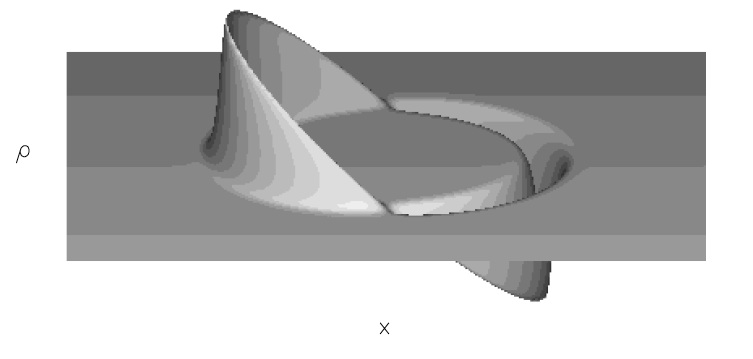Faster than Light Travel Part 1: The Mathematical Existence and Potential Application of Warp Drives
Faster than light travel is one of the most ambitious dreams embodied in modern science fiction literature. Our current line of technological development cannot hope to travel to other star systems for at least several generations. Assuming a universal limit of the speed of light, it would take at least 4.37 years for an astronaut to travel to Alpha Centauri, our closest non-solar star. Even with future engineering developments, it will be impossible for humanity to ever explore the universe or even the galaxy with this speed limit.
In 1994, Miguel Alcubierre published a paper that mathematically modelled an effect consistent with general relativity that could move an object (i.e. a spaceship) at an arbitrary speed unbounded by the speed of light. The spaceship would be propelled forward by contracting the spacetime ahead of it and expanding the spacetime behind it. The intermediary ground between the contraction and expansion would create a ‘warp bubble’ as shown in the original figure created by Alcubierre:

Figure 1. The expansion of spacetime by a warp drive traveling in the positive-x direction, where ρ is a projection of the y and z-axes onto one axis; Image source
The most impressive component of this warp drive model is that the passage of time is identical for an observer and the traveler, meaning that no relativistic time dilation occurs in this mode of travel (Alcubierre 1994).
The issue with warp drives, however, is that the warp bubble requires a large source of negative energy and in fact violates all three energy conditions (Alcubierre 1994). Lobo and Visser concluded that these violations persist no matter what the travel speed is, squandering any hopes that slower drives might be able to use normal matter as fuel (Lobo et al. 2004). Pfenning and Ford calculated that in order to transport a single human, the negative energy of the warp bubble wall would not only need to be concentrated in a thickness comparable to the Planck length, but also be ten magnitudes more energetic than the total mass of the visible universe (Pfenning et al. 1997). In any practical sense, the original Alcubierre warp drive is impossible to create.
More recent work by Broeck has shown that the energy requirements of the drive can be significantly reduced by altering the geometry of the warp bubble. Broeck’s example resulted in an energy with the equivalent mass of several suns – still nothing feasible, but much more so than ten billion visible universes (Broeck 1999).
Further work by Natário on the motion of the bubble showed that the spacetime around the warp bubble does not necessarily need to be expanded and contracted. Instead, the motion can be viewed as sliding around the bubble around the rest of spacetime (Natário 2002). This generalized form of warp movement seems to have no reaction fueling it; in fact, Lobo and Visser determined that any form of this warp drive would be a “reaction-less drive” (Lobo et al. 2004).
A reactionless warp drive powered by a source of negative energy is certainly many generations away from its invention. Major functional components of this drive have yet to be discovered, and even then they are currently impossible to efficiently utilize. More discoveries about dark energy may lead to the creation of a field of spacetime in which all three energy conditions can be broken. Until then, humans will have to stick to rockets.
References:
Alcubierre M. 1994. The warp drive: hyper-fast travel within general relativity. 1:10
Natário J. 2002. Warp drive with zero expansion 1:9
Lobo FSN, Visser M. 2004. Fundamental limitations on “warp drive” spacetimes 1:13
Pfenning MJ, Ford LH. 1997. The unphysical nature of “Warp Drive” 6:10
Broeck CVD. 1999. A ‘warp drive’ with more reasonable total energy requirements 1:9


1 Comment
Seminar 3 at CCNY » Faster than Light Travel Part 2: Traversable Wormholes
December 3, 2016[…] drives, as previously discussed here, are not the only candidates for future faster than light travel. Another common topic in both […]